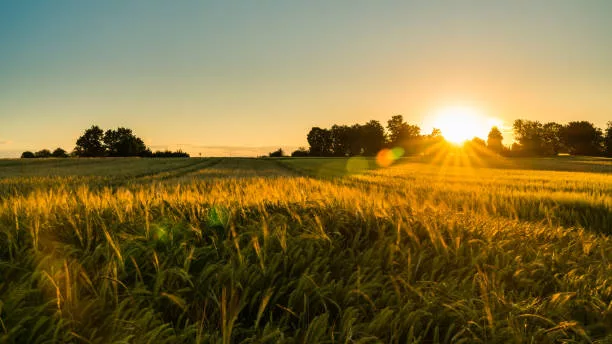Barren County receives funds for agriculture programs

Barren County Receives Funding for Agricultural Development

Orange sunset sky above ripe grain field nature landscape in summer. Photo credit to Getty Images/iStockphoto.
Barren County, located in Kentucky, has been approved to receive funding from the Kentucky Agricultural Development Board and the Kentucky Agricultural Finance Corporation. These funds will support various agricultural projects and contribute to the achievement of the Sustainable Development Goals (SDGs).
Funding from the Kentucky Agricultural Development Board
The Kentucky Agricultural Development Board has approved a total of $1,03,393.62 for agricultural diversification and rural development projects. As part of this funding, Barren County has received $9,229 for its “On-Farm Energy Incentives Program.” This program aims to enhance the energy efficiency of existing farm equipment and facilities, promoting sustainable practices in agriculture.
“Creating more diversity in our agricultural landscape builds a stronger future for our state,” stated Jonathan Shell, Commissioner of Agriculture and board chair. “The projects awarded today by the Kentucky Agricultural Development Board are a direct step toward fostering that diversity. Together, we are shaping a stronger future and a better tomorrow.”
Funding from the Kentucky Agricultural Finance Corporation
In addition to the funding from the development board, Barren County has also received $112,500 from the Kentucky Agricultural Finance Corporation. This funding is part of the “Beginning Farmer Loan Program” (BFLP), which aims to support individuals with farming experience who wish to develop, expand, or buy into a farming operation.
The BFLP provides financing options for various purposes, including the purchase of livestock, equipment, agriculture facilities, farm real estate, or investments in partnerships or LLCs. By supporting beginning farmers, this program contributes to the growth and sustainability of the agricultural sector in Barren County.
With the support of these funding initiatives, Barren County is making significant progress towards achieving the SDGs, particularly Goal 2: Zero Hunger and Goal 8: Decent Work and Economic Growth. By promoting agricultural diversification, energy efficiency, and supporting beginning farmers, the county is working towards a more sustainable and resilient agricultural sector.
SDGs, Targets, and Indicators
1. Which SDGs are addressed or connected to the issues highlighted in the article?
- SDG 2: Zero Hunger
- SDG 7: Affordable and Clean Energy
- SDG 8: Decent Work and Economic Growth
2. What specific targets under those SDGs can be identified based on the article’s content?
- SDG 2.3: By 2030, double the agricultural productivity and incomes of small-scale food producers, in particular women, indigenous peoples, family farmers, pastoralists, and fishers, including through secure and equal access to land, other productive resources and inputs, knowledge, financial services, markets, and opportunities for value addition and non-farm employment.
- SDG 7.2: By 2030, increase substantially the share of renewable energy in the global energy mix.
- SDG 8.3: Promote development-oriented policies that support productive activities, decent job creation, entrepreneurship, creativity, and innovation, and encourage the formalization and growth of micro-, small-, and medium-sized enterprises, including through access to financial services.
3. Are there any indicators mentioned or implied in the article that can be used to measure progress towards the identified targets?
- Indicator for SDG 2.3: Increase in agricultural productivity and incomes of small-scale food producers.
- Indicator for SDG 7.2: Increase in the share of renewable energy used in agricultural operations.
- Indicator for SDG 8.3: Increase in the number of micro-, small-, and medium-sized enterprises in the agricultural sector.
SDGs, Targets, and Indicators
| SDGs | Targets | Indicators |
|---|---|---|
| SDG 2: Zero Hunger | SDG 2.3: By 2030, double the agricultural productivity and incomes of small-scale food producers, in particular women, indigenous peoples, family farmers, pastoralists, and fishers, including through secure and equal access to land, other productive resources and inputs, knowledge, financial services, markets, and opportunities for value addition and non-farm employment. | Increase in agricultural productivity and incomes of small-scale food producers. |
| SDG 7: Affordable and Clean Energy | SDG 7.2: By 2030, increase substantially the share of renewable energy in the global energy mix. | Increase in the share of renewable energy used in agricultural operations. |
| SDG 8: Decent Work and Economic Growth | SDG 8.3: Promote development-oriented policies that support productive activities, decent job creation, entrepreneurship, creativity, and innovation, and encourage the formalization and growth of micro-, small-, and medium-sized enterprises, including through access to financial services. | Increase in the number of micro-, small-, and medium-sized enterprises in the agricultural sector. |
Source: wcluradio.com








